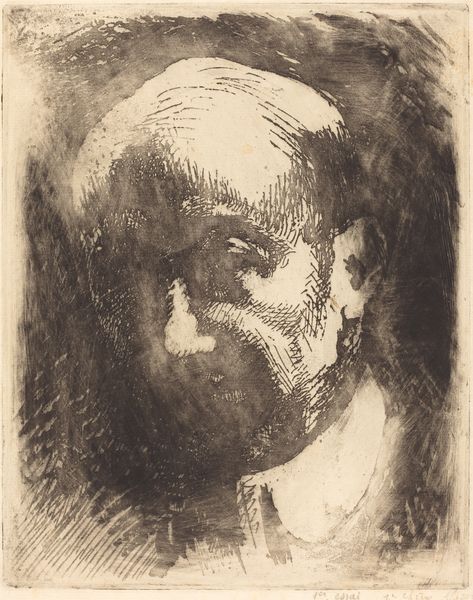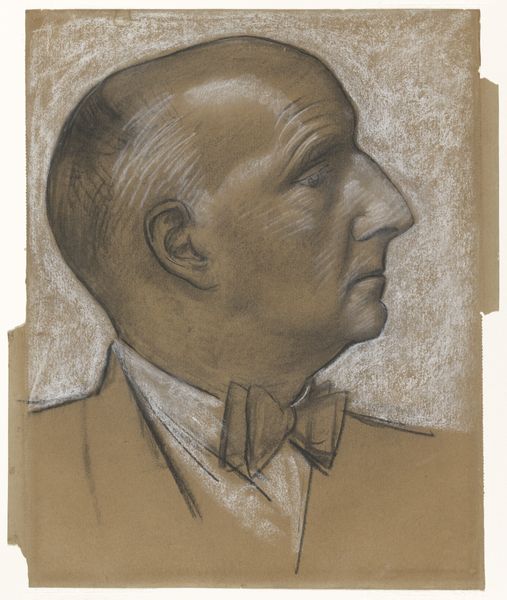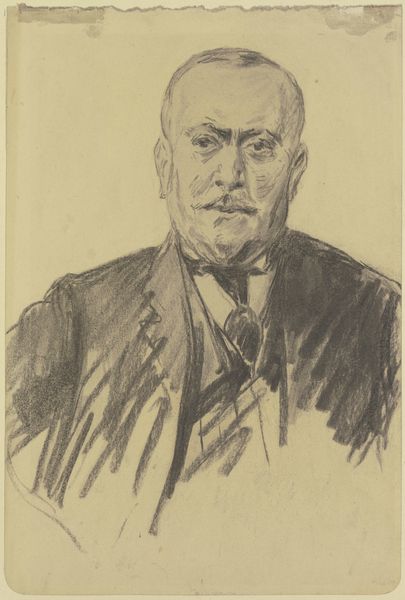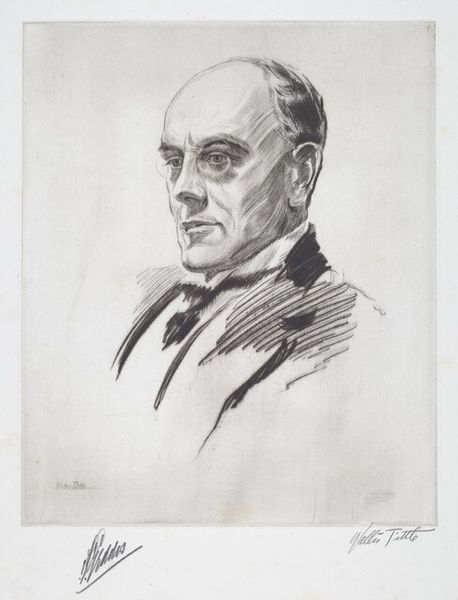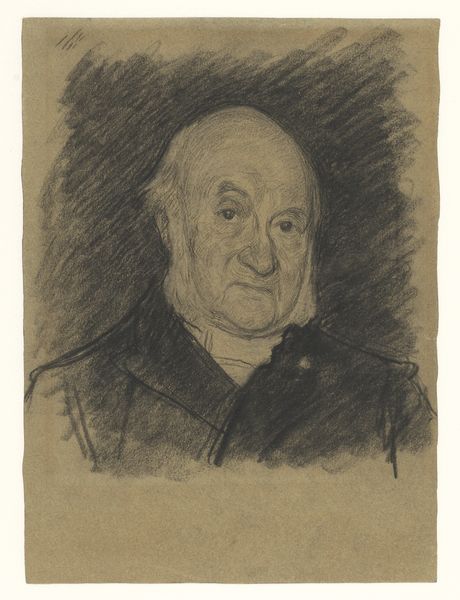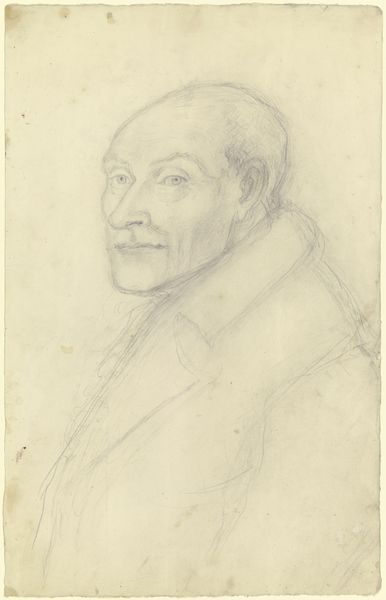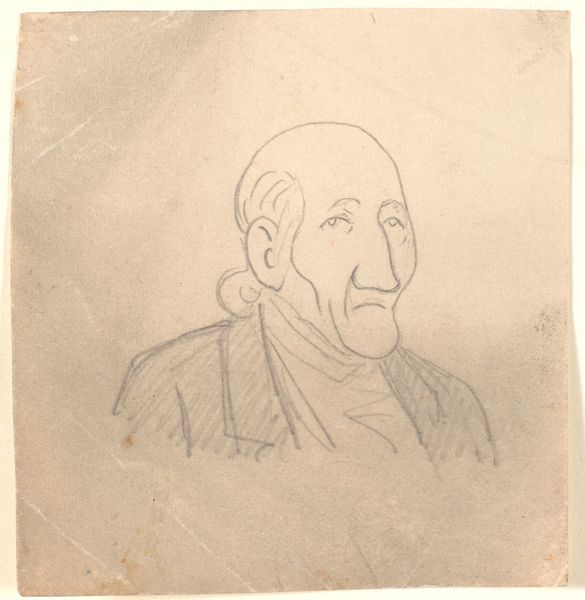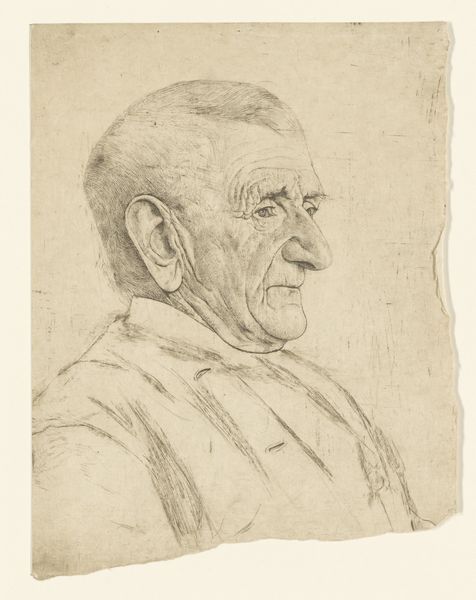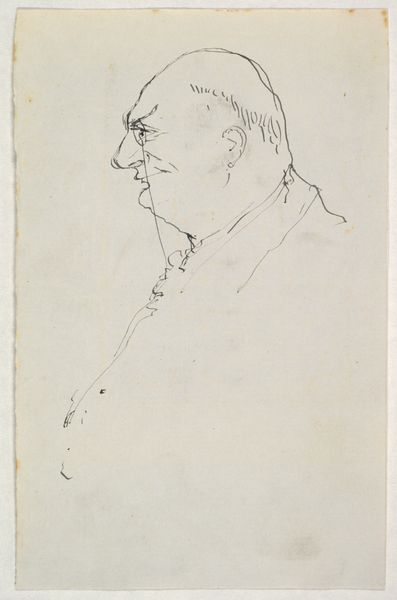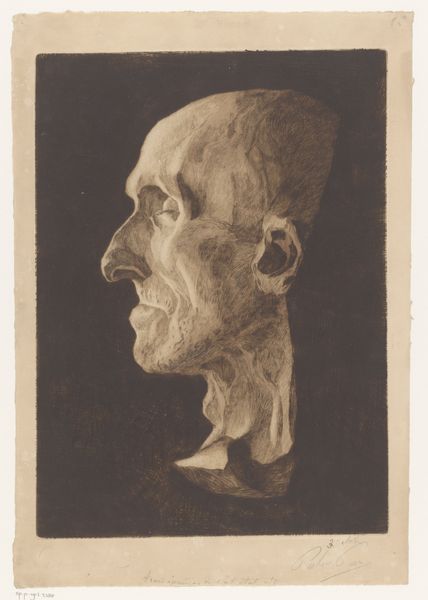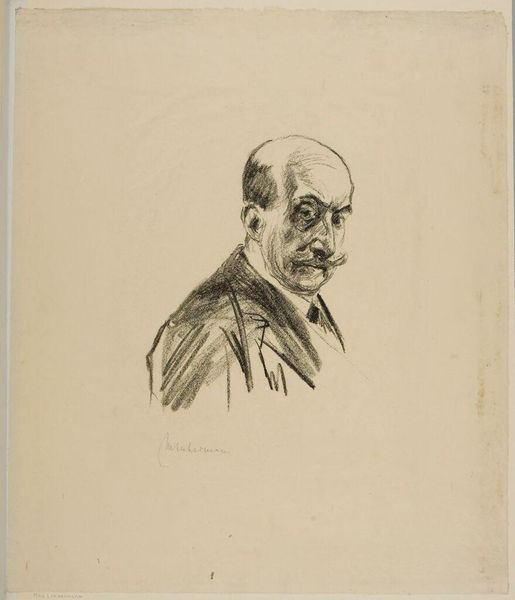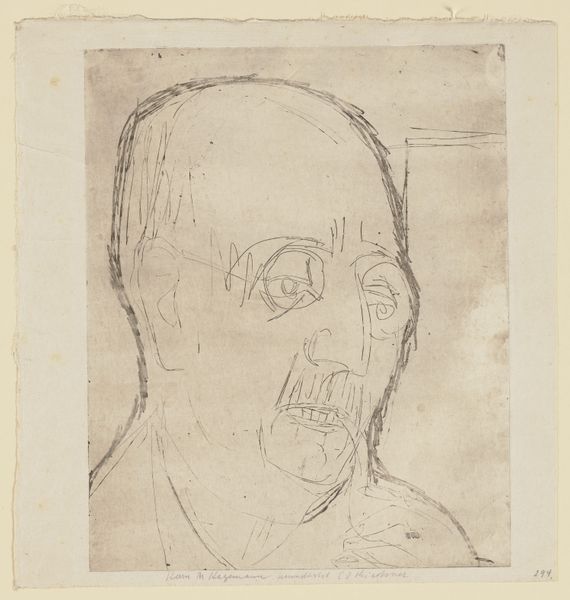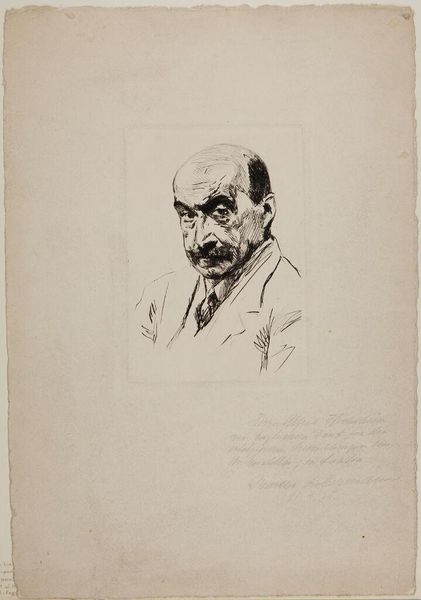
drawing, pencil
#
portrait
#
drawing
#
pencil drawing
#
pencil
#
portrait drawing
#
academic-art
#
realism
Dimensions: 158 mm (height) x 145 mm (width) (bladmaal)
Curator: Here we have Poul S. Christiansen’s 1899 pencil drawing, “Bagermester B.”, part of the collection at the SMK, Statens Museum for Kunst. It appears to be a portrait of a baker. What is your initial impression? Editor: It strikes me as an understated yet commanding portrayal. The light and shadow create a sense of gravitas around his figure, even though it's a humble pencil drawing. His gaze holds a lot of power, considering it’s an unfinished study, almost. Curator: Precisely! Considering the period, late 19th century, it is easy to view such a drawing in relation to academic artistic traditions and portraiture’s role in defining societal status. Editor: True. There is an undeniable connection to its historical context in visualizing the rising merchant and trade classes of the time. I see it as a negotiation of power, rendered visible. The “Bagermester” becomes a subject worthy of aesthetic attention. It acknowledges and possibly even interrogates the shifting power structures of the era. Curator: And in terms of the more direct history, academic artistic practice frequently involved portraiture study and practice to become a proficient and celebrated artist. The drawing then operates as a document of training and visual experimentation in the artist’s career. Editor: But doesn’t the title also create some distance? Bagermester B., he is anonymized. He becomes more a representative of a profession than an individual. His particular identity, somewhat shrouded, transforms this portrait into a study about class, labor and even gender, doesn’t it? Was he being represented for his own identity or as a mere representative of labour? Curator: Anonymity allows the drawing to function on a multitude of levels— a portrait but also something of a symbol. It points to interesting discourses circulating in society during the artist’s time and perhaps influencing Christiansen’s own perspective and method. Editor: Well, Poul S. Christiansen gives us a rich tableau to consider about both artistic methodology and the state of a changing European society. Curator: It's a compelling glimpse into artistic training, while simultaneously being revealing in social implications and cultural norms during that era.
Comments
No comments
Be the first to comment and join the conversation on the ultimate creative platform.
